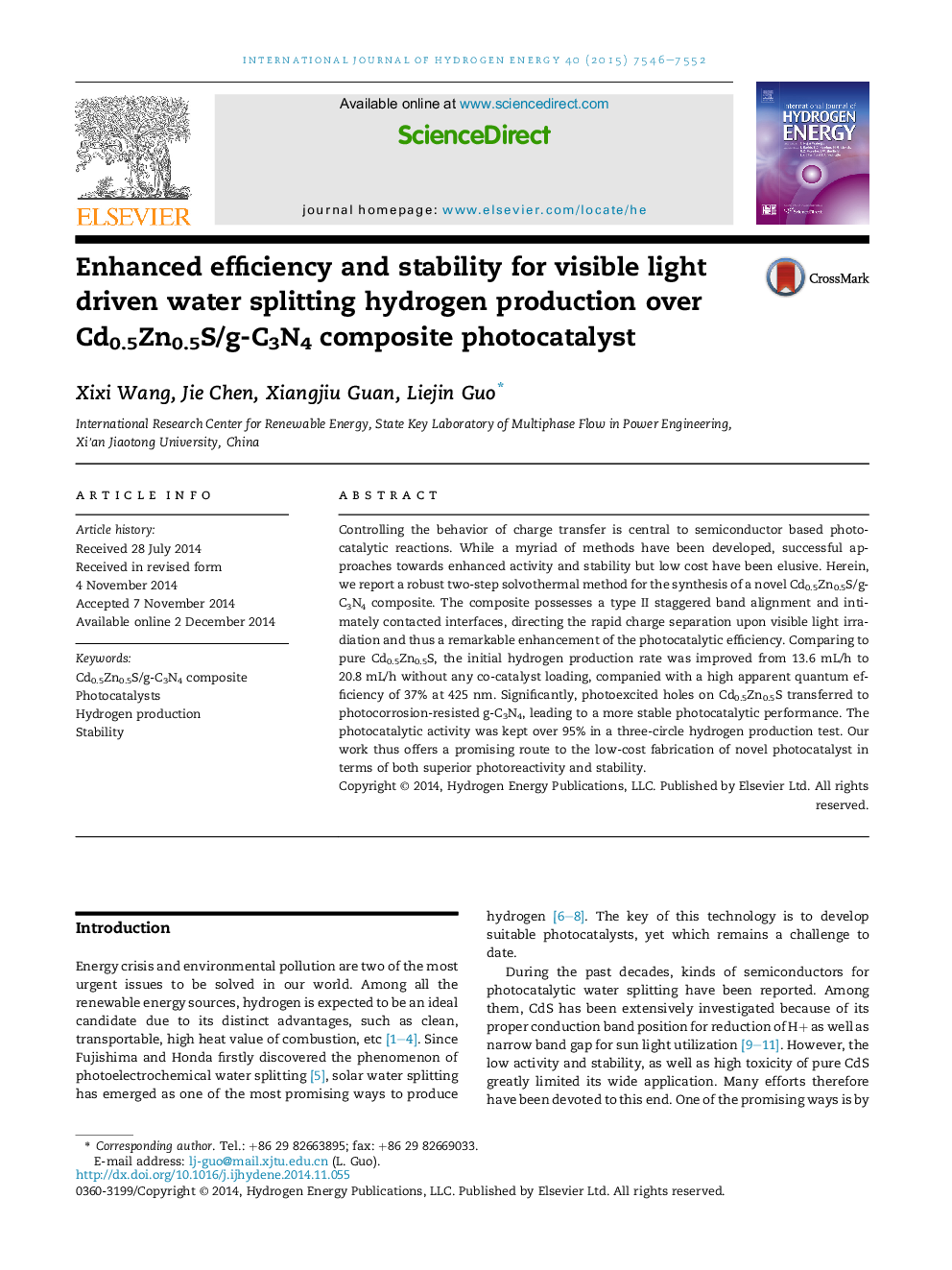| Article ID | Journal | Published Year | Pages | File Type |
|---|---|---|---|---|
| 1279727 | International Journal of Hydrogen Energy | 2015 | 7 Pages |
•A series of Cd0.5Zn0.5S/g-C3N4 photocatalysts were successfully prepared by a two-step solvothermal method.•The two semiconductors were proved could form a type II band alignment.•Both photocatalytic efficiency and photocatalytic stability have been improved.
Controlling the behavior of charge transfer is central to semiconductor based photocatalytic reactions. While a myriad of methods have been developed, successful approaches towards enhanced activity and stability but low cost have been elusive. Herein, we report a robust two-step solvothermal method for the synthesis of a novel Cd0.5Zn0.5S/g-C3N4 composite. The composite possesses a type II staggered band alignment and intimately contacted interfaces, directing the rapid charge separation upon visible light irradiation and thus a remarkable enhancement of the photocatalytic efficiency. Comparing to pure Cd0.5Zn0.5S, the initial hydrogen production rate was improved from 13.6 mL/h to 20.8 mL/h without any co-catalyst loading, companied with a high apparent quantum efficiency of 37% at 425 nm. Significantly, photoexcited holes on Cd0.5Zn0.5S transferred to photocorrosion-resisted g-C3N4, leading to a more stable photocatalytic performance. The photocatalytic activity was kept over 95% in a three-circle hydrogen production test. Our work thus offers a promising route to the low-cost fabrication of novel photocatalyst in terms of both superior photoreactivity and stability.
